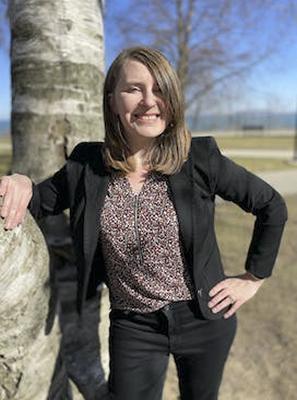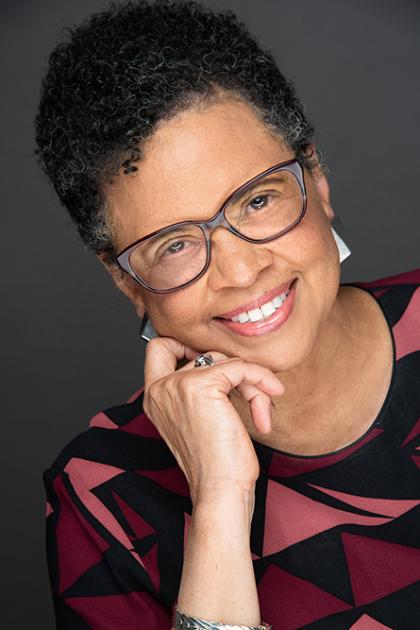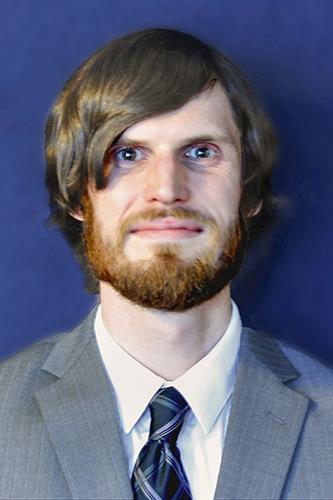Recognized as a threat to human health since 400 B.C., air pollution affects everything from our health and wellbeing to the environment.
Many factors contribute to poor air quality, including smoking, mold and radon, common indoor pollutants, ground level ozone, particulate matter, and outdoor allergens.
Meanwhile, vehicle emissions, fuel oils and natural gas to heat homes, and by-products of manufacturing and power generation—particularly coal-fueled power plants and fumes from chemical production—are the main causes of air pollution.
Poor air quality reduces visibility, blocks sunlight, and causes acid rain. Poor air quality also harms forests, wildlife and agriculture with greenhouse gas pollutants, is a major cause of climate change, and impacts the entire planet.
Additionally, poor air quality can limit one’s ability to be physically active. For example, air pollutants enter our bloodstream, contributing to coughing, ashy eyes, worsening breathing and lung disease—all of which cause hospitalizations, cancer or even premature deaths.
Moses NgongOver the years and due to many factors, Cleveland has ranked among the worst cities in the US for air pollution—particularly when it comes to ozone and particulate matter—causing residents to experience respiratory problems, cardiovascular disease, and asthma.
As the Global Shapers Cleveland Hub continues to explore environmental justice issues, the organization recently hosted a virtual conversation to help the public become more aware of the impacts of poor air quality.
Moses Ngong, impact officer for Global Shapers Cleveland, moderated the discussion.
Almeta Cooper, national manager of health equity for Moms Clean Air Force, Christina Yoka, chief of air pollution outreach for the Cleveland Department of Public Health, Division of Air Quality, Tim Kovach, air quality planner with Northeast Ohio Areawide Coordinating Agency (NOACA), and Yvonka Hall, executive director of Northeast Ohio Black Health Coalition (NEOBHC) served as panelists.
Quality control
Wondering how the City of Cleveland balances concerns about air quality with the desire to attract new industry and business to the region, Ngong first turned to Yoka with the Department of Health to jumpstart the discussion.
“What mechanisms exist to protect people from poor air quality issues?” Ngong asks.
Yoka, whose role involves managing anything that relates to public health, air quality, and community engagement, has a short and simple answer: “air permits,” she responds.
 Christina Yoka“That is the process we utilize to regulate facility emissions,” she says before going on to clarify how permitting works with the Ohio Environmental Protection Agency (EPA) ultimately issuing the air permits.
Christina Yoka“That is the process we utilize to regulate facility emissions,” she says before going on to clarify how permitting works with the Ohio Environmental Protection Agency (EPA) ultimately issuing the air permits.
“The protections put in place are based on the Clean Air Act,” she explains. “The Clean Air Act emission standards have a primary focus of public health and then a secondary focus of environmental health.”
Currently, Cleveland’s Air Quality division is the contracted agency with the Ohio EPA, responsible for enforcing all the Clean Air Act rules and Ohio’s air pollution rules for Cuyahoga County.
“We do that through our enforcement staff who inspect facilities and plants,” Yoka says. “We have an ambient air monitoring network throughout Cuyahoga County that monitors particulate matter and ozone, and the other criteria of air pollutants. And, we also have a permitting staff who is responsible for receiving permit recommendations from facilities that may require an air permit and writing up those recommendations and submitting them to the Ohio EPA.”
When reviewing applications, Yoka’s office looks at the standards set by the United States EPA to see if Ohio can continue to meet them should the facility requesting the permits go into operation. Then her office’s enforcement staff monitors the facilities to ensure compliance after permits are issued.
The division also relies on citizen complaints.
“Residents are able to submit air quality complaints to us [through] our hotline and this can be anything from strange odors in the neighborhood. It could be strange colors coming from a smokestack, even dust produced from construction sites, are all complaints we’ll go out and investigate,” says Yoka.
Health disparities in minority neighborhoods
NEOBHC’s Hall then discusses how air quality overlaps with racial justice issues, particularly in Cleveland. Her organization, founded in 2011, is the first coalition in Ohio to focus exclusively on African American disparities by working to educate, advocate for, and empower the community.
“We have communities here that are basically under siege,” she says. “When we look at where a lot of the factories that are in our communities, where the highways are going, the different things that are going on within our urban areas… we have communities that live near toxic areas every single day,” says Hall, adding that many Cleveland children are going to school in neighborhoods that are toxic.
Hall says the role particulate matter plays in where materials are dumped and how things are happening in communities always begs the question, how much do communities actually know about the toxins that are present?
 Yvonka HallHall, a 48-year resident of the Lee-Harvard neighborhood, recalls a spill in that area about 30 years ago, resulting in many residents, including her grandfather, dying of cancer.
Yvonka HallHall, a 48-year resident of the Lee-Harvard neighborhood, recalls a spill in that area about 30 years ago, resulting in many residents, including her grandfather, dying of cancer.
“We think about the human capital,” she says. “What happens to our children when our neighborhoods are contaminated, when our playgrounds are contaminated? What happens when we live close to highways and all the toxins that are coming off diesel trucks and into our neighborhood? What happens around lead poisoning?”
Hall continues, “When we talk about the impact on the African American community, we have to talk about the historical impact. We have to talk about what redlining has done to our communities, where toxins have landed and why. Why we have more issues on the east side than the west side? And, what happens to the communities [in the] long term.”
Yoka adds that if you look at any environmental screening tool, you’ll find communities within the redlining maps have been impacted the most.
With Moms Clean Air Force being a national organization of about one million moms, dads, and caregivers (with about 88,000 members in Ohio), who focus on clean air and protecting children’s health, Ngong asked Cooper to talk about how local advocacy informs advocacy nationally.
“One of the things we know is that a lot of people just don’t understand the connection between climate change and health and that is a real barrier,” Cooper says.
 Almeta CooperShe goes on to say, although many people—regardless of their backgrounds—accept that climate change is happening, most people don’t talk about it or the impacts.
Almeta CooperShe goes on to say, although many people—regardless of their backgrounds—accept that climate change is happening, most people don’t talk about it or the impacts.
Therefore, Moms Clean Air Force is designed to get people talking, but they don’t stop there— they encourage people to take action.
“We make information accessible and get people to talk with their elected officials,” Cooper says.
One thing she finds is that people don’t know they have access to elected officials. “It’s not a cure-all, but it’s certainly an important step,” she says.
Cooper says that because of poor air quality, more children—especially Black and Brown children—have asthma than ever before. She says it’s the largest chronic disease among children, and the “iconic yellow school bus” exposes riders to a cancer-causing agent that sometimes makes the air inside the bus is worse than outside.
“We help people understand there is a connection, and we can do something about it,” she says.
Knowing how harmful school buses can be to children’s health and clean air, Moms Clean Air Force has been particularly active with advocating for electric school buses and other regulatory issues.
The local air
Wondering how climate change affects air quality in Northeast Ohio, Ngong turned to Kovach, who is working on a climate action plan for the region on behalf of NOACA.
NOACA is the designated metropolitan planning organization for the five counties in the Greater Cleveland Metro area. The agency is responsible for conducting transportation and environmental planning activities in the region and distributes about $50 million annually in federal funding for transportation, environmental improvement, and infrastructure investments.
 Tim Kovach“There’s no question that, in the aggregate, climate change is going to make the air quality issues we face in the region worse in a number of ways,” Kovach says.
Tim Kovach“There’s no question that, in the aggregate, climate change is going to make the air quality issues we face in the region worse in a number of ways,” Kovach says.
He says there’s a little bit of a divergence between the way it will affect ground level ozone or smog— the pollution we are worried about on hot summer days—and particulate matter. He goes on to explain the existing complexities because of climate change and the challenges we face.
“It’s a complicated picture. Overall, the signs are not good,” Kovach says. “The air quality benefits associated from climate change are really more than enough reason to address the challenge that we’re facing with the climate crisis.”
According to Kovach, some studies suggest the public health benefits from air pollution alone would be enough to pay for the types of investments we need to meet the goals and commitments on climate change.
NOACA is one of the first organizations to develop a climate action plan on a regional scale. As part of the process, Kovach says, they are focused on the benefits of climate action and he’s trying to find a way to quantify those benefits from an air quality perspective.
He says he found that, if the net zero emissions goal for 2050 is met, the region would see 277 fewer premature deaths annually, 626 on the high end.
And we would reap total public health benefits between $3 billion and $6.7 billion each year after we reach net zero, he says.
Cooper reiterates that, as the federal agency with the most responsibility for the Clean Air Act, the EPA recently made public commenting available and is accepting public testimony related to methane.
“I just want to emphasize, any citizen can submit their comments,” she says. “The more that the EPA hears from us, the more they know what we care about and what they should do. They are more responsive the more they hear from the public.”
NEOBHC’s Hall says people who are impacted the most are not commenting, and things need to be challenged. She adds that it’s important for people to know that a lot of agencies, including hers, are pushing for higher standards.
“We’re out here seeking to be a voice for the voiceless,” she says.
This is the seventh story in a 10-part series designed to highlight how an intergenerational model is helpful in moving the needle in so many aspects of Cleveland as well as to uplift narratives of resilience and impact within the environmental justice space. Upcoming stories will spotlight different organizations working on environmental justice and climate change as well as capture the intergenerational voices working on these issues.
[ad_2]
Originally Appeared Here